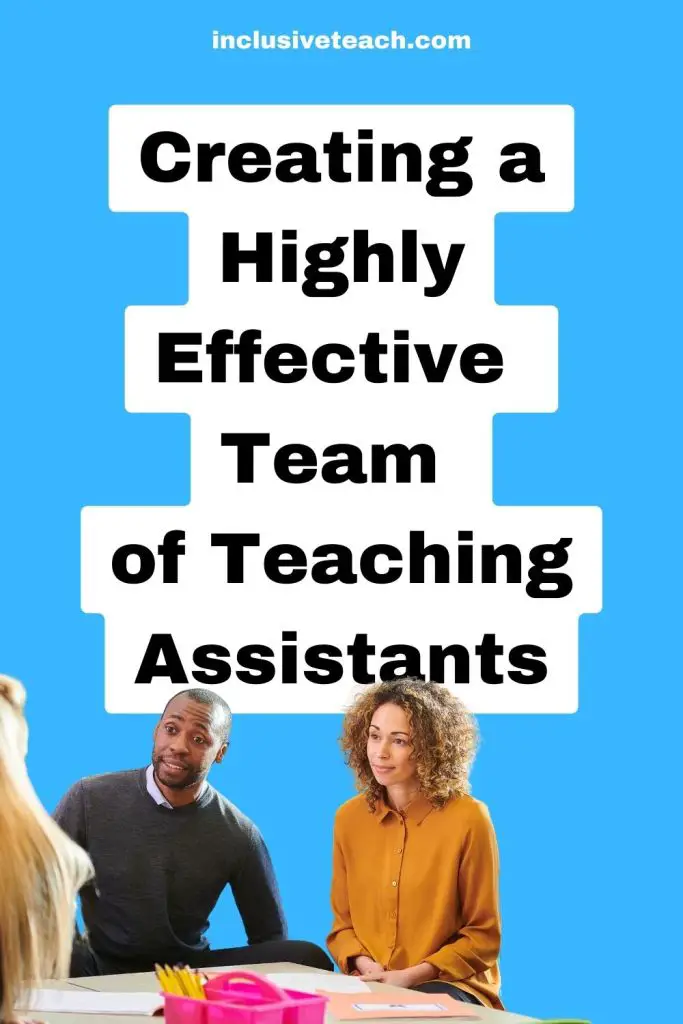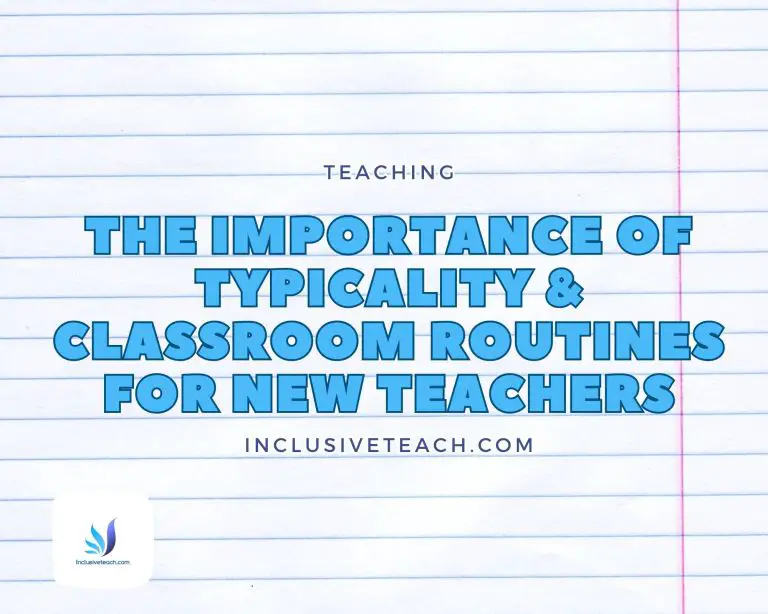Creating a Highly Effective Team of Teaching Assistants
Building an Effective Teaching Assistant Team in School
Effective collaboration is essential for teaching assistants (TAs) to provide the best possible support for students and teachers in UK schools. When TAs work together as a cohesive team, drawing on each other’s strengths and working towards shared goals, it can have a tremendously positive impact on the learning environment and overall school community.
However, teamwork doesn’t just happen by chance. It requires intentional effort, clear communication, mutual respect, and a commitment to building strong working relationships. This in-depth guide will explore practical strategies for forming a cooperative, high-functioning TA team, enabling you to maximise your collective impact.
Establish a Shared Vision and Goals
The foundation of any successful team is a clear, unified vision of what you’re collectively striving to achieve. Take the time to come together as a TA team, discuss your school’s overarching goals, and develop a set of shared objectives and priorities that align with the school’s mission. I have written about setting your vision in the article Leading a Team written as training for special needs teachers/ECTs who may be leading a large teaching assistant team. This is an element of practice that is not usually covered in teacher training programmes.
Examples of potential shared goals:
- Providing comprehensive academic support to help all students fulfil their potential
- Creating an inclusive, supportive learning environment that meets diverse student needs
- Enhancing classroom management and behaviour strategies
- Improving communication and collaboration with teachers and other staff
Once you’ve established these goals, ensure they are documented and understood by all team members. Revisit and refine them periodically as needs evolve.
Defining Roles, Responsibilities, and Accountability
With a united vision in place, it’s crucial to explicitly define each team member’s roles and responsibilities. This clarity minimises duplication of efforts, ensures all necessary tasks are covered, and promotes accountability.
Examples of potential TA roles:
- General classroom support (working with small groups, one-on-one, etc.)
- Specialised support for students with SEND
- Learning resource preparation and organisation
- Data tracking and progress monitoring
- Handling administrative tasks like photocopying and filing
Determine which roles align best with each TA’s skillset, strengths and experience. But also ensure a degree of flexibility, with team members ready to jump in and support in different capacities as needed.
Establish protocols for following up on tasks and holding each other accountable in a constructive, non-judgemental manner. This could involve:
- Creating a shared organisational system (online task lists, team calendar, etc.)
- Scheduling regular team meetings to review progress and responsibilities
- Implementing a “buddy system” for peer coaching and support
Promoting Effective Communication
Open and consistent communication is the glue that binds an effective TA team together. Without it, misunderstandings, inefficiencies, and conflicts are bound to arise. Make communication a top priority from the start.
Strategies for developing effective communication:
- Establish structured times for team members to share updates, concerns and ideas (team meetings, daily check-ins, etc.)
- Use tools like group chats, shared online documents, and team communication apps to stay connected in real-time
- Practice active listening skills, allowing team members to speak without interruption and asking clarifying questions
- Speak respectfully and avoid making assumptions – check for understanding
- Discuss and agree upon communication protocols (response times for messages, sharing student information appropriately, etc.)
Additionally, pay attention to non-verbal communication cues. Simple habits like making eye contact, using open body language, and minimising external distractions during conversations can go a long way.
Make an effort to regularly share positive feedback and words of appreciation with your teammates. Celebrating each other’s strengths and contributions nurtures team comradery and boosts morale.

Managing Conflicts within the Team
Even with open communication and shared goals, disagreements and conflicts within the TA team are natural and to be expected. What’s crucial is learning how to navigate those conflicts in a constructive, solution-focused manner.
Tips for managing team conflicts effectively:
- Establish an environment where team members feel safe voicing concerns in a respectful way
- Don’t make assumptions – ask questions to fully understand each perspective
- Look for compromise and creative solutions that address each party’s key needs/concerns
- Bring in an objective third-party (usually leadership) to mediate if the conflict can’t be easily resolved
- Avoid personalising the conflict – focus on resolving specific issues
- Follow clear procedures for conflict resolution outlined by school policies
- After resolving a conflict, make efforts to rebuild trust and positive team dynamics
If you find yourself in frequent conflicts with particular teammates, proactively look for the root causes and discuss ways to improve your working relationship for the greater benefit of the team.
Building Trust Through Professional Development
One for the SENCO/Leadership. Investing in ongoing professional development for your TA team serves two key purposes:
First, it equips each individual teaching assistant with enhanced skills, knowledge and confidence to excel in their roles and support student needs more effectively. This reduces gaps in the team’s overall capabilities.
Secondly, engaging in shared training activities can help build cohesion, trust, and a sense of community within the team. As you learn and grow together, you develop shared experiences and a deeper appreciation for each other’s roles.
Ideas for team-based professional development:
- Attend relevant training workshops, conferences or courses as a team
- Conduct in-house team training sessions where each TA shares their expertise
- Collectively read books/resources on instructional strategies, classroom management, etc. and discuss
- Arrange for expert guest speakers to train your team on key topics
- Encourage peer observations to learn from each other’s strengths
- Share online courses, webinars and other self-study resources
Remember, different team members will have different learning styles and preferences. Accommodate these variances and give everyone opportunities to engage with professional development in ways that resonate best for them.
Collaborating and Partnering with Teachers
This section is for TA’s directly – While strong internal teamwork is essential for TAs, it’s also crucial to collaborate effectively with the teachers you support. Developing positive working partnerships and consistent communication channels prevents duplicated efforts and fragmentation. I know it’s often unpopular and a cause of anxiety but often teaching assistants will be moved to cover absences or to meet the changing needs of pupils. Embrace this and look at it as an opportunity to develop your skills.
Best practices for TA-teacher collaboration:
- Establish formal meeting times to align on goals, student needs and strategies
- Clarify preferences for communication methods and response times
- Clearly define roles, responsibilities and expectations for how you’ll work together
- Remain flexible to accommodate each teacher’s individual approach and needs
- Demonstrate emotional intelligence – see things from the teacher’s perspective
- Openly discuss any issues, concerns or areas for improvement in your collaboration
When you’re all working harmoniously towards the same student-focused objectives, it creates an optimal learning environment where everyone can focus on their strengths.
Respecting and Embracing Diversity within the Team
As a TA team, you’ll each bring different backgrounds, cultures and personal identities that influence your perspectives, communication styles, and ways of understanding the world.
Respecting and celebrating this diversity is what allows you to draw on a wider range of viewpoints, abilities, and approaches to meet the needs of your diverse student population.
Encourage an inclusive team environment by:
- Learning about and honouring each other’s cultures, traditions and experiences
- Using respectful, inclusive language that avoids stereotypes or assumptions
- Accommodating differing religious/cultural practices and needs
- Recognising how personal identities intersect and impact professional experiences
- Speaking up respectfully if you observe insensitive language or discrimination
- Looking for opportunities to diversify your team further and recruit from underrepresented groups
Additionally, be aware of power dynamics within the team that could marginalise certain members’ voices. Differences in age, gender, ethnicity, or duration on the team should not determine whose input is more valued.
When every individual feels safe, respected, and empowered to contribute their unique skills and perspectives, the team becomes exponentially stronger.
Implementing Feedback Processes
Giving and receiving feedback is an integral part of any effective teaching assistant team’s growth and continuous improvement. By exchanging insights on what’s working well and what needs adjustment, you facilitate greater self-awareness and fuel positive changes.
Keys to delivering constructive feedback:
- Focus feedback on specific, observable behaviours rather than personal judgments
- Highlight not just weaknesses, but also areas of strength to be built upon
- Provide feedback in a timely, private manner to avoid embarrassment
- Use a respectful, non-confrontational tone – this is about growth
- Offer suggestions for potential solutions and improvement strategies
- Be open to the team member responding and explaining their perspective
And when receiving feedback as a team member:
- Avoid becoming defensive or taking criticism personally
- Ask clarifying questions to better understand the feedback
- Thank the team member for taking the time to provide feedback
- Reflect objectively on the feedback and consider how to apply it
- If you disagree with the feedback, have an open discussion about it
You can implement periodic peer feedback sessions, in addition to manager-provided feedback. This helps reinforce accountability across the whole team.
Maintaining Work-Life Balance and Well-Being
The work of teaching assistants, while immensely rewarding, can also be emotionally and physically draining at times. Supporting students with diverse needs, handling classroom behaviours, and juggling various duties can take a toll if not balanced properly.
As a team, make a conscious effort to protect each other’s well-being and encourage sustainable work-life balance practices:
- Set boundaries around work hours, breaks, and time off when possible
- Build opportunities for self-care activities like mindfulness, exercise, etc.
- Take turns providing coverage so teammates can attend to personal/family matters
- Check-in on each other’s workloads and offer support to prevent burnout
- Access counselling resources if you’re experiencing excessive stress/anxiety
- Find moments of humour, fun, and celebration as a team when appropriate
- Advocate to school leadership for resources to manage demanding workloads
When each team member’s overall wellness is prioritised, you’re able to bring your best, most energized selves to your roles each day in service of students.
Modelling Positive Teamwork for Students
Beyond the direct benefits to your own team dynamics, exemplifying positive collaboration and teamwork can be invaluable for the students you support. You have the opportunity to model essential life skills like:
- Communicating respectfully and resolving conflicts constructively
- Including and valuing diverse perspectives and backgrounds
- Supporting and encouraging one another through challenges
- Sharing responsibilities and working towards common goals
As students observe you working together as a cohesive, supportive unit, they internalise what healthy teamwork looks like. These impressions can shape how they interact with peers, view authority figures, and approach group projects throughout their academic careers.
Narrate your teamwork process when appropriate so students understand the intentionality behind it. You can explain: “We’re having a team meeting to make sure we’re all on the same page about how to best support you.”
Celebrate milestones and success as a team in front of students. This reinforces the power of collective effort and shows students that you value and take pride in one another’s contributions.
By embodying the teamwork principles you aim for students to develop, you become role models for essential collaborative skills.
Continuously Evolving and Improving Teaching Assistant Practise
The pursuit of cohesive, high-functioning teamwork is an ongoing process, not a fixed destination. As your team’s dynamics shift over time with changes in personnel, student needs, school policies, and other variables, your approach has to continually adapt.
Build in recurring opportunities to reassess and refine your team strategies:
- Conduct team health checks through surveys, discussions, etc.
- Analyse what’s working well and what needs improvement
- Gather feedback from teachers, parents/caregivers, and students
- Revisit and update team goals, roles, and processes periodically
- Research new tools, technologies, and best practices to enhance collaboration
Most importantly, maintain an open mindset and willingness to evolve as a team. Resist becoming entrenched in existing methods for the sake of comfort or routine. The most effective teams embrace the opportunity for positive change.
Commit to consistent reflection and growth, to ensure your TA team stays aligned and engaged to provide the best possible academic or pastoral support.
Final Thoughts on Effective TA Teams
Building an effective, collaborative teaching assistant team is an ongoing journey and a powerful catalyst for student success. When you prioritize strategies like:
- Establishing a unified vision and defined roles
- Encouraging open communication and trust
- Embracing diversity and professional growth
- Balancing work responsibilities with self-care
- Modelling constructive teamwork for students
You create the foundation for a cohesive, high-impact team that can handle any challenge together. While it requires conscious effort, the payoff of smoother operations, enhanced learning environments, and every team member feeling supported is immense.







One Comment